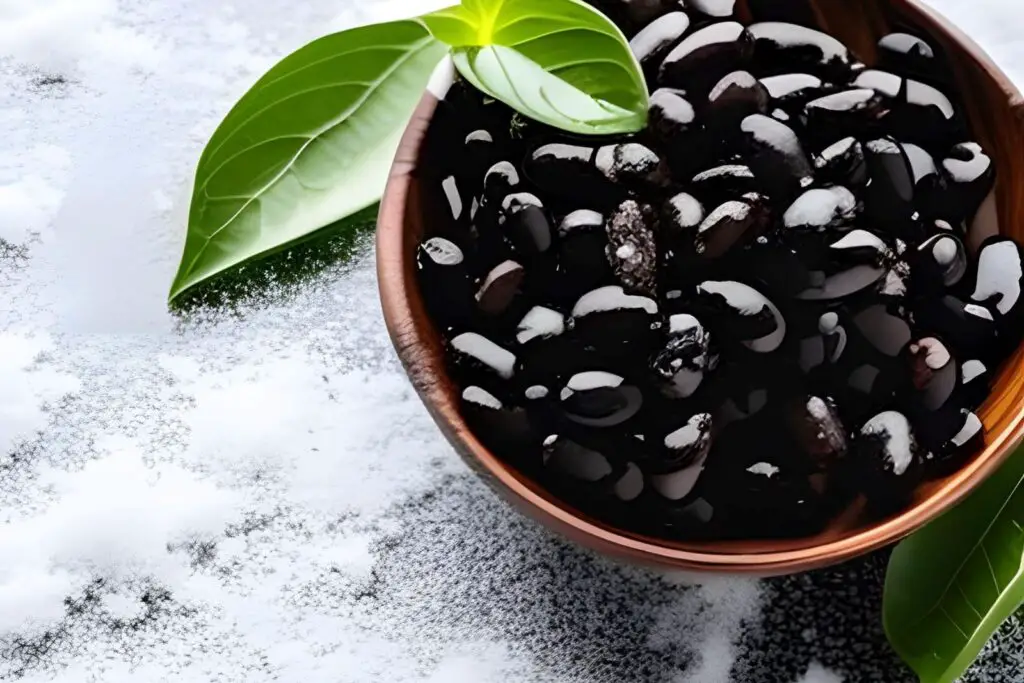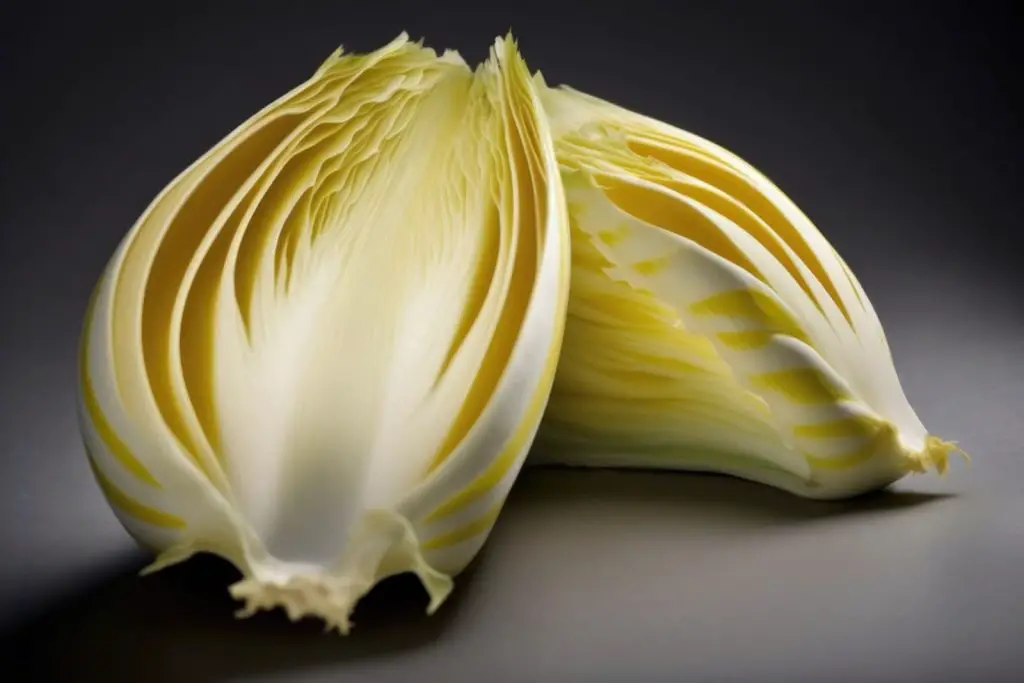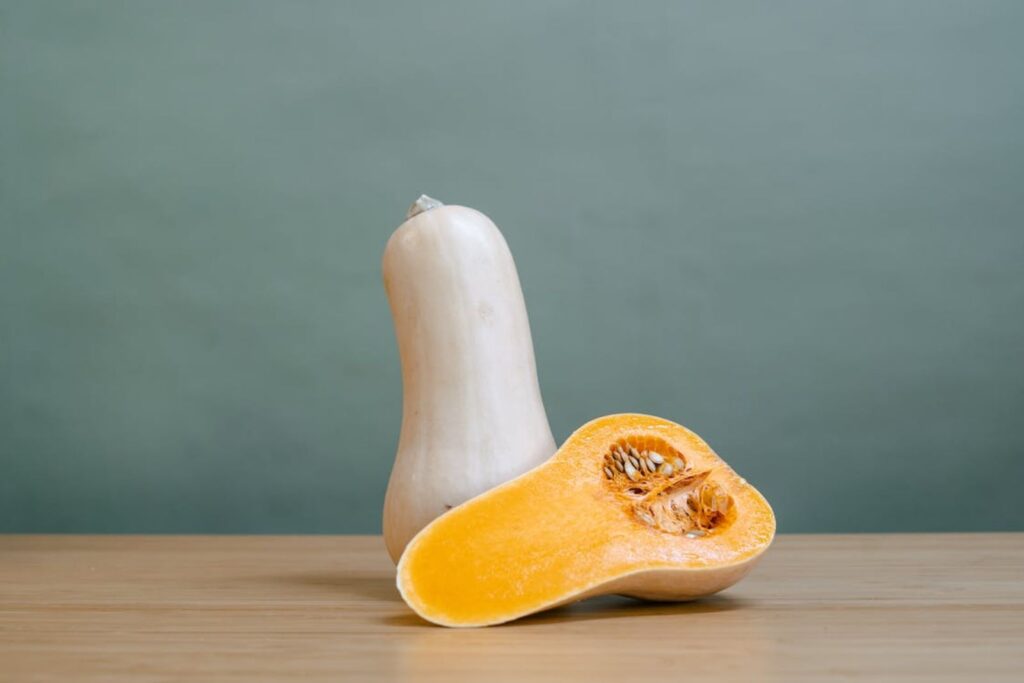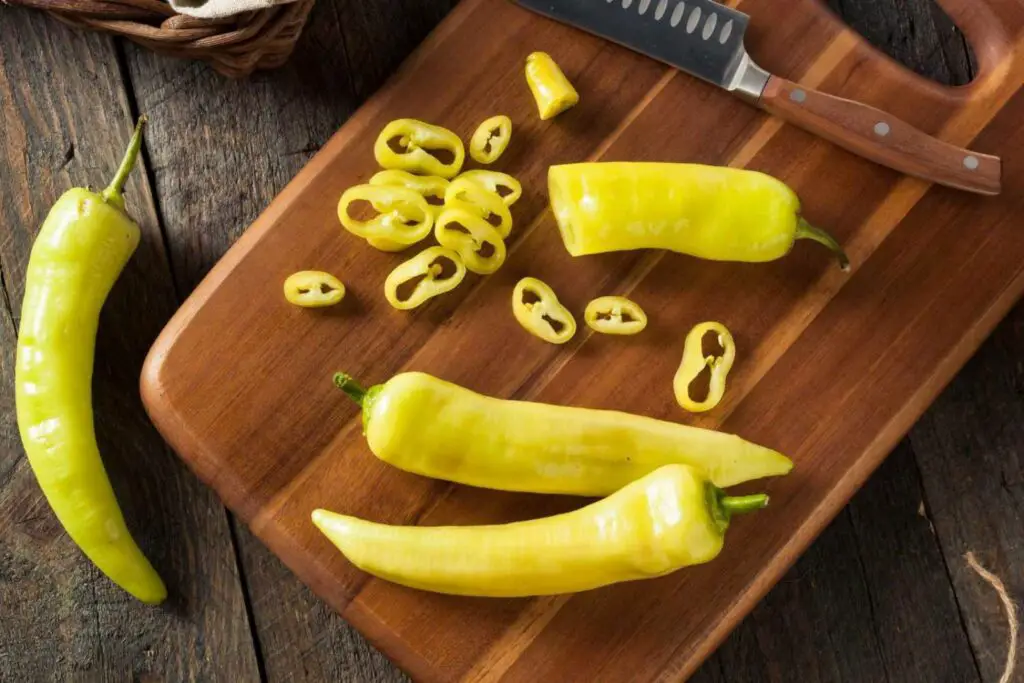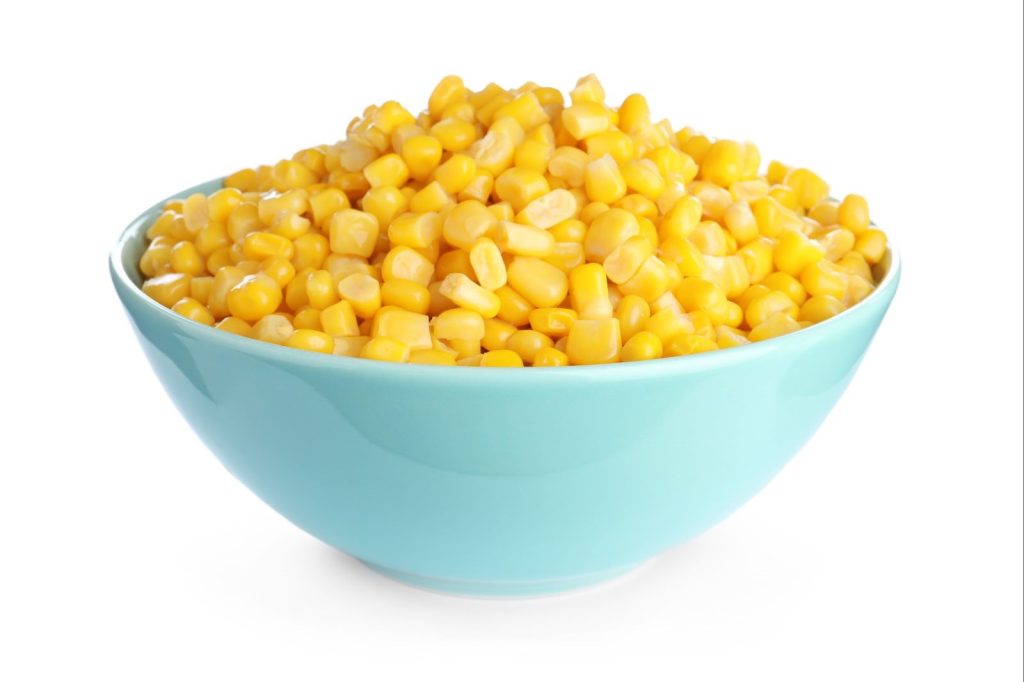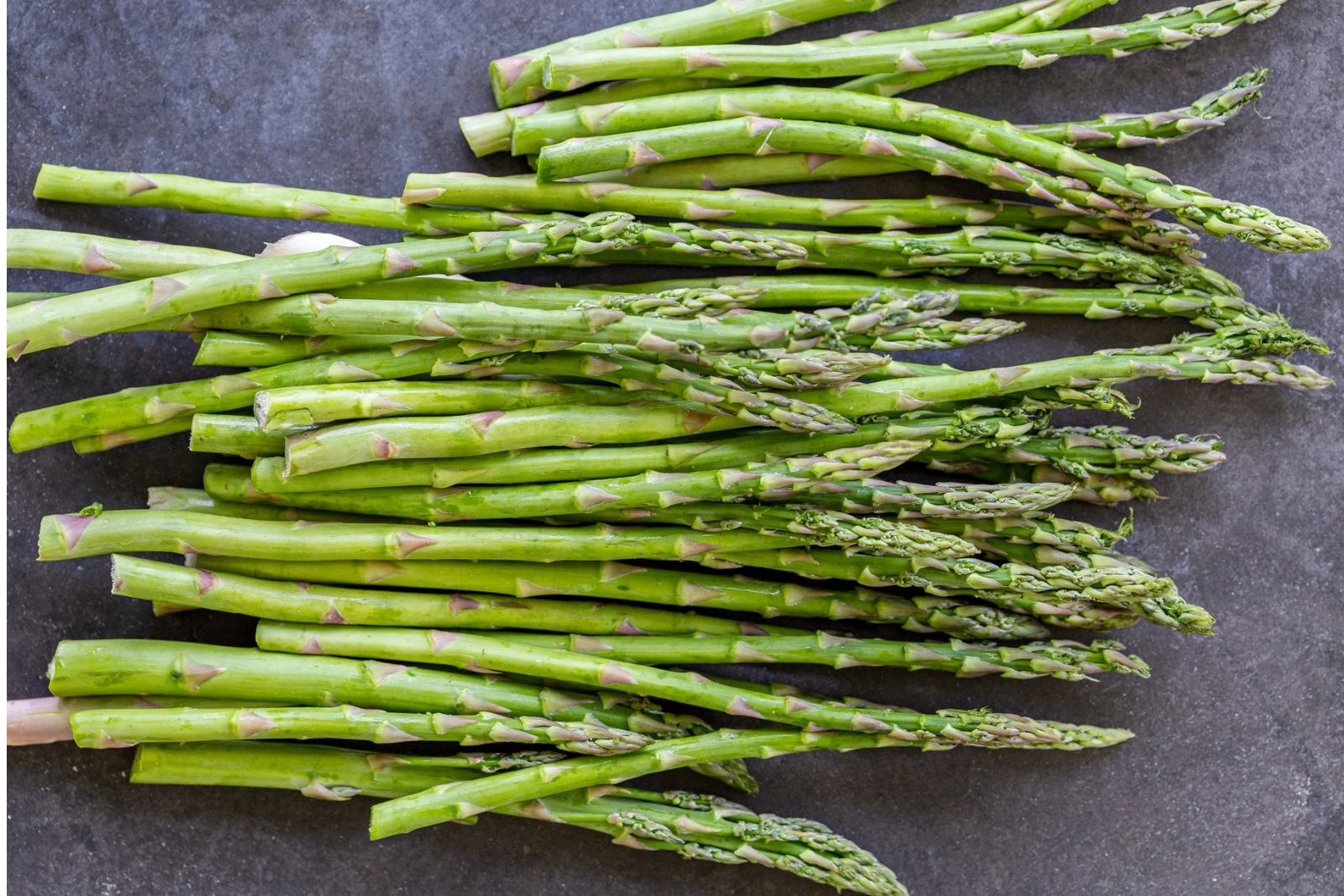
Asparagus spears are the young, tender stalks of the asparagus plant. They are harvested for consumption and are known for their distinct flavor. These spears can be green, white, or purple in color and are commonly used in a variety of culinary dishes. Asparagus spears are nutritious, low in calories, and can be prepared in numerous ways. Preserving the freshness of asparagus spears through freezing allows for enjoyment even when they are out of season. By adhering to straightforward procedures, you can effectively freeze asparagus spears and retain their desired texture and flavor. This article provides a comprehensive guide on freezing asparagus spears to ensure their optimal quality for future consumption.
Here’s a guide on how to freeze asparagus spears:
- Step 1: Select fresh asparagus spears
- Step 2: Wash and trim the spears
- Step 3: Blanch the asparagus spears
- Step 4: Drain and dry the spears
- Step 5: Arrange the spears for freezing
- Step 6: Flash-freeze the asparagus spears
- Step 7: Package and seal the asparagus spears
- Step 8: Label and date the packages
- Step 9: Store in the freezer
Step 1: Select fresh asparagus spears
Choosing the right asparagus spears is essential for achieving optimal results when freezing. Freshness is key to preserving the flavor and texture of the asparagus. Look for firm and vibrant spears that are free from any signs of wilting or damage.
When selecting asparagus spears, pay attention to the tips. They should be tightly closed, indicating that the asparagus is fresh and hasn’t started to deteriorate. Avoid spears with open or flowering tips, as this can be a sign of over-maturity, and they may not freeze well.
Inspect the entire length of the spears for any discoloration or shriveling. Ideally, the asparagus should have a bright green color and smooth, taut skin. Avoid any spears that appear limp, have brown spots, or feel soft to the touch, as these are indications of decreased freshness.
Furthermore, consider the size of the asparagus spears. Thicker spears tend to have a heartier texture, while thinner spears are more delicate. Choose the size that suits your preferences or the intended use for the frozen asparagus.
Step 2: Wash and trim the spears
Properly washing and trimming the asparagus spears is an essential step before freezing them. This ensures that they are clean and ready for storage.
Begin by rinsing the asparagus spears under cold water. This removes any dirt, sand, or other debris that may be present on the surface. Gently rub the spears with your fingers to ensure thorough cleaning. Washing the spears also helps hydrate them, keeping them fresh during the freezing process.
After washing, it’s essential to trim the asparagus spears to remove the tough and woody ends. These ends are typically less tender and can be challenging to chew. To do this, you have two options: snapping or cutting.
To snap the asparagus, hold the spear towards the bottom and bend it gently until it naturally breaks. The spear will naturally break at the point where the tender part meets the tougher end. Discard the woody portion.
Alternatively, you can use a knife to trim the ends. Place the asparagus spears on a cutting board and cut about 1-2 inches from the base. Make a straight cut to ensure even ends.
Trimming the asparagus spears serves two purposes. First, it removes the less desirable woody portion, improving the overall texture and taste of the asparagus. Second, it ensures that the spears fit well into the packaging, allowing for more efficient use of freezer space.
Step 3: Blanch the asparagus spears
Blanching plays a crucial role in maintaining the color, texture, and flavor of the asparagus spears during the freezing process. It helps to preserve their overall quality and prevent the loss of nutrients.
To blanch the asparagus spears, start by bringing a pot of water to a rolling boil. Meanwhile, prepare a bowl filled with ice water. Blanching requires a quick transfer of the asparagus spears from boiling water to ice water.
Once the water reaches a boil, carefully place the trimmed asparagus spears into the boiling water. Allow them to blanch for approximately 2 to 3 minutes. Blanching times may vary depending on the thickness of the spears, so keep a close eye on them.
Blanching serves several purposes. Firstly, it helps to deactivate enzymes in the asparagus that can cause loss of flavor, color, and texture over time. This enzymatic activity can result in a decline in quality during freezing and storage. Blanching also helps to remove any surface bacteria or dirt that may be present on the spears.
After the blanching time is up, promptly transfer the asparagus spears to the bowl of ice water. The ice water bath halts the cooking process and rapidly cools down the spears. This step is crucial as it helps to preserve the vibrant green color and crisp texture of the asparagus.
Once the asparagus spears have cooled in the ice water for the same duration as the blanching time (around 2 to 3 minutes), remove them from the ice water and pat them dry. It’s important to ensure that the spears are completely dry before proceeding to the next steps.
Can I freeze asparagus spears without blanching them?
Blanching is highly recommended before freezing asparagus spears to preserve their quality and texture. Blanching helps inactivate enzymes that can cause flavor and texture changes during storage. It also helps maintain the vibrant green color of the asparagus spears. Skipping the blanching step may result in a lower-quality end product.
Should I salt the water when blanching asparagus?
When blanching asparagus, it is generally not necessary to add salt to the water. The purpose of blanching is to briefly cook and then cool the asparagus to preserve its color, texture, and flavor. While salt can enhance the taste of asparagus, it is optional and primarily a matter of personal preference. If desired, a small amount of salt can be added to the blanching water, but it is not essential for the blanching process itself.
Step 4: Drain and dry the spears
After blanching and cooling the asparagus spears, it’s important to drain and dry them before proceeding with the freezing process. This step ensures that excess moisture is removed, which helps maintain the quality of the asparagus during freezing.
To begin, carefully remove the blanched asparagus spears from the ice water bath and allow them to drain thoroughly. You can place them on a colander or simply hold them over the sink to let the water drip off. This draining process helps eliminate any remaining water on the surface of the spears.
Next, use a clean kitchen towel or paper towels to pat the asparagus spears dry. Gently press the towels against the spears to absorb any excess moisture. It’s important to ensure that the spears are completely dry as any remaining moisture can contribute to the formation of ice crystals during freezing. Excessive ice crystals can negatively impact the texture and flavor of the asparagus.
Removing excess moisture from the asparagus spears before freezing helps to prevent ice formation and freezer burn. Freezer burn can result in dry, discolored, and unappetizing asparagus. By properly draining and drying the spears, you are taking a crucial step to preserve their quality and ensure a better culinary experience when you use them later.
Step 5: Arrange the spears for freezing
How you choose to arrange the asparagus spears before freezing depends on your personal preference and how you plan to use them later. There are two common methods: individual freezing or freezing in bundles.
For individual freezing, lay the asparagus spears in a single layer on a baking sheet or tray. Make sure they are not touching each other to prevent them from freezing together. This method is particularly useful if you anticipate needing to use smaller quantities of asparagus at a time. Freezing the spears individually allows for easy portioning, as you can remove only the amount needed without defrosting the entire batch.
If you prefer to freeze the asparagus spears in bundles, group several spears together. Secure the bundle with kitchen twine or a rubber band, tying it tightly around the middle or near the trimmed ends. Bundling the asparagus helps to keep them organized and prevents individual spears from getting lost in the freezer. It can also make handling and storing the spears more convenient.
When choosing between individual freezing or bundling, consider your future usage and convenience. Individual freezing offers flexibility in portioning, while bundling provides a neat and organized storage solution.
Step 6: Flash-freeze the asparagus spears
Flash freezing is a crucial step in the freezing process that helps to preserve the individuality of the asparagus spears and prevent them from sticking together during long-term storage.
To flash-freeze the asparagus spears, carefully place the baking sheet with the arranged spears into the freezer. Ensure that the spears are in a single layer and not touching each other. It’s essential to provide enough space between the spears for the cold air to circulate effectively.
Allow the asparagus spears to freeze for about 1-2 hours. During this time, the rapid freezing process locks in their freshness and prevents the formation of large ice crystals. Flash freezing helps maintain the spears’ texture, flavor, and overall quality.
By quickly freezing the asparagus spears, they retain their individual structure and do not clump together. This is particularly beneficial when it comes to later usage, as you can easily remove the desired quantity without defrosting the entire batch. Flash freezing also helps to maintain the spears’ vibrant color, as it minimizes oxidation and preserves their visual appeal.
Can I freeze asparagus spears in a freezer bag without flash-freezing them?
While flash freezing is recommended for optimal results, you can still freeze asparagus spears in a freezer bag without flash freezing. However, without flash freezing, there is a higher chance of the spears sticking together. To minimize clumping, ensure that the asparagus spears are arranged in a single layer and separate them as much as possible before sealing the bag.
Step 7: Package and seal the asparagus spears
After flash-freezing the asparagus spears, it’s time to package them properly to ensure long-term preservation and minimize the risk of freezer burn.
Transfer the flash-frozen asparagus spears into freezer-safe bags or airtight containers. Freezer-safe bags are ideal for individual freezing, while airtight containers work well for both individual spears and bundled portions. Choose packaging options that are durable, moisture-resistant, and specifically designed for freezer storage.
When placing the asparagus spears into the packaging, arrange them in a way that minimizes air space between the spears. This helps reduce the chances of freezer burn, which can occur when food is exposed to air and causes dehydration and loss of quality.
Once the asparagus spears are in the bags or containers, it’s important to remove as much air as possible before sealing. Excess air can lead to the formation of ice crystals and negatively impact the texture and flavor of the asparagus over time. You can use the “burping” method to remove air from bags or press down on containers to eliminate trapped air before sealing them tightly.
Step 8: Label and date the packages
Properly labeling and dating the packages containing the frozen asparagus spears is a crucial step in organizing your freezer and ensuring you use the spears within the recommended storage period.
Using a permanent marker or labels, clearly write the contents of the package, which in this case are “asparagus spears.” This labeling will help you quickly identify the package when you need to retrieve it from the freezer.
Additionally, it’s important to include the date of freezing on the package. Write the month and year when the asparagus spears were frozen. This information serves as a reference point and allows you to keep track of how long the asparagus has been in the freezer.
Labeling and dating the packages create a system of organization and knowledge about the contents of your freezer. It helps you easily identify and select the package of asparagus spears you want to use, ensuring that you rotate and consume them within the recommended storage period. This practice promotes food safety and prevents any potential waste or confusion regarding the age of the frozen asparagus spears.
Step 9: Store in the freezer
After properly packaging the sealed packages of asparagus spears, it’s time to store them in the freezer. Follow these guidelines to ensure optimal storage and maintain the quality of the asparagus spears:
- Arrange for easy access: Place the packages of asparagus spears in a way that allows for easy access. This can be achieved by organizing them in a designated section or drawer of your freezer. Keep in mind that proper airflow is essential, so avoid overcrowding the freezer with other items that could block the circulation of cold air.
- Prevent crushing or damage: Take care to store the asparagus spears in a manner that avoids crushing or damaging them. If using freezer bags, stack them flat or side by side. If using airtight containers, place them in an organized manner without placing heavy items on top that could deform or break the spears.
Other related questions
How long can asparagus spears last in the freezer?
Asparagus spears can last in the freezer for approximately 8-12 months without significant loss of quality. While they may still be safe to eat beyond this timeframe, their texture and flavor may deteriorate over time. It is recommended to consume the frozen asparagus spears within the suggested storage period for the best culinary experience. By consuming the asparagus spears within this timeframe, you can ensure they maintain their optimal taste and texture.
How do you defrost asparagus spears?
To defrost asparagus spears, there are two main methods: refrigerator thawing and water thawing. For refrigerator thawing, transfer the frozen asparagus spears to the refrigerator and let them thaw slowly overnight or for about 24 hours. Alternatively, for water thawing, place the frozen asparagus spears in a sealed plastic bag and submerge them in cold water, changing the water every 30 minutes until fully thawed. Avoid using hot water or microwaving asparagus spears for defrosting, as it can lead to uneven thawing and loss of quality.
Should frozen asparagus spears be thawed before cooking?
Thawing frozen asparagus spears before cooking is generally recommended for better results. Thawing allows for more even cooking and helps retain the texture and flavor of the asparagus. However, if you’re using the asparagus in certain recipes like soups or stir-fries, you can cook them directly from frozen, adjusting the cooking time as needed. It is important to follow the specific instructions provided in your recipe to achieve the desired outcome.
Can you refreeze asparagus spears?
Refreezing asparagus spears is not recommended. Once asparagus spears have been thawed, they undergo changes in texture and moisture content, which can lead to a loss of quality and taste. Refreezing can further degrade their texture and result in a less enjoyable culinary experience. It is advisable to consume thawed asparagus spears promptly or find alternative ways to use them rather than refreezing them.
How do I know if the asparagus spears have gone bad after being frozen?
To determine if frozen asparagus spears have gone bad, look for signs of freezer burn, such as discoloration, dryness, and the presence of ice crystals. Additionally, check for any unusual odors or off-putting smells that may indicate spoilage. If the asparagus spears exhibit these characteristics or if you have doubts about their quality, it is advisable to discard them to avoid potential foodborne illnesses.
Can I freeze cooked asparagus spears?
Yes, you can freeze cooked asparagus spears. However, it’s important to note that the texture of cooked asparagus may change slightly after freezing. To freeze cooked asparagus spears, follow the same steps of cooling, packaging, and labeling as outlined in the article. It’s recommended to consume them within 3-4 months for the best quality.
Can I freeze asparagus spears that have been cut into smaller pieces?
Yes, you can freeze asparagus spears that have been cut into smaller pieces. However, it’s important to note that the texture and quality of the asparagus may be slightly different compared to freezing whole spears. To freeze smaller pieces of asparagus, follow the same steps of blanching, cooling, packaging, and labeling as outlined in the article. It’s recommended to use the frozen asparagus within the recommended storage period for the best results.

